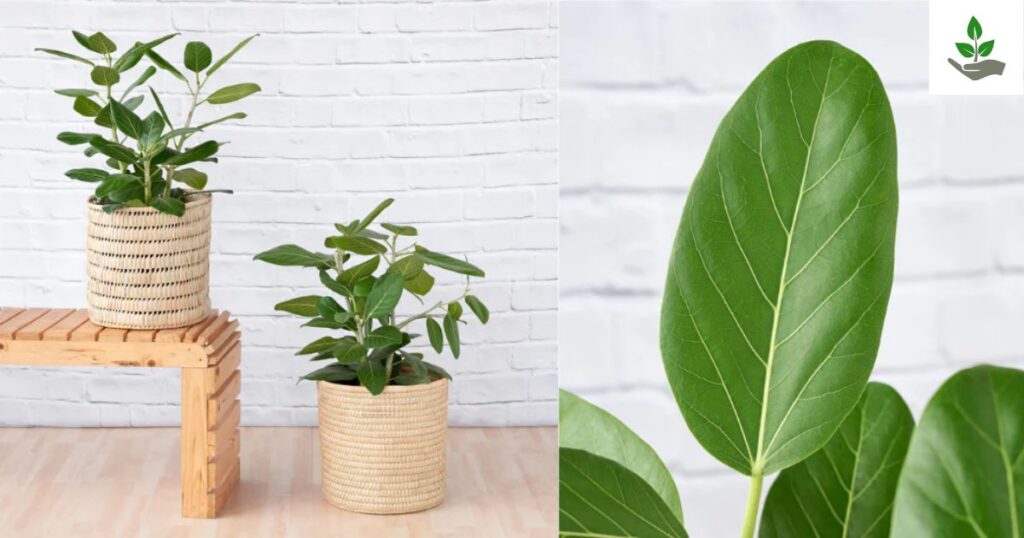Guide About Ficus Audrey Care, History, Growing, Uses & Tips
Ficus Audrey is The list of must-have houseplants for both novice and seasoned plant lovers alike. With its refined look, boasting soft oval leaves and dramatic pale trunk, this relative of the trendy Fiddle Leaf Fig provides a more tolerant option without compromising on looks.
Where it is the national tree, the Ficus Audrey can reach towering heights in its native habitat, but is happily well within reach for care and maintenance as a houseplant. Whether you want to make a statement in your living area or add to your indoor jungle collection.
The basics of Ficus Audrey care will make your plant healthy for years to come. This Guide covers everything you should understand about caring for this beautiful Ficus Audrey Care, ranging from best lighting conditions and watering habits to fixing the most common troubles.
What Is Ficus Audrey?
Ficus Audrey (Ficus benghalensis) is a gorgeous indoor plant that embodies the homegrown form of India’s national tree, the grand Banyan Fig. Characterized by its soft, oval leaves with prominent veining and an impressive pale trunk that develops interesting textural patterns as it ages, the plant adds an architectural, refined presence to any room.
In their native environment, these incredible trees can reach gigantic sizes, growing aerial roots that become secondary trunks supporting huge canopies that cover acres. Ficus Audrey is kept to a manageable size while still retaining the dignified nature of its wild relatives.

It is frequently compared to the Fiddle Leaf Fig (Ficus lyrata), but the Audrey provides much the same visual drama and is even more tolerant of indoor conditions, making it a great option for those who desire a showpiece without the dreaded finickiness of certain other popular ficus types.
Ficus Audrey History
The Ficus Audrey possesses a valuable history interwoven in the cultural and religious history of the Indian subcontinent for centuries. The Ficus benghalensis, or Banyan tree, or just called “Bargad” in India, has been an extremely revered plant for Hindu mythology and is most often associated with immortality, longevity, and wisdom.
The Great Banyan at the Indian Botanical Garden, Kolkata, over 250 years old with canopy area over 14,500 square meters, is a proof of the capability of this plant. Although horticultural slang name “Audrey” has extremely rare etymology among horticultural communities, the species was widely demanded as a home decoration piece in Western houses during the 2010s as part of houseplant mania in general.
While the Fiddle Leaf Fig ruled the first plant trends, the Ficus Audrey was a behind-the-scenes gem that’s loved for its statement-of-lifestyle aesthetic but broke indoor versatility barriers to become one of the top-selling houseplants of contemporary homes ultimately.
Ficus Audrey Seeds
Seed propagation of Ficus Audrey is a rare practice among house plant growers, simply because seeds of this sort do not commonly appear in plant populations in domestic settings. In natural conditions, Ficus benghalensis has a strange mode of reproduction with some wasp species particular to pollination of the inflorescence found in their specially adapted fruit-like structures, or syconia.

Without such specialized pollinators, seed production becomes virtually impossible within home conditions. Commercial growers, however, typically propagate Ficus Audrey through stem cuttings or air layering techniques, which guarantee plants that are identical to the parent specimen.
Ficus Audrey Planting And Growing
- Potting Mix: Use well-draining, high-quality soil with peat moss, perlite, and pine bark for optimal aeration and moisture retention.
- Container Selection: Choose a sturdy pot 1-2 inches larger than the root ball with ample drainage holes.
- Planting Depth: Position the plant at the same depth it was growing previously, with the trunk base level with or slightly above the soil line.
- Settling In: Water thoroughly after planting and place in bright, indirect light away from drafts or heating vents.
- Acclimation Period: Expect some leaf drop during the initial 2-4 weeks as the plant adjusts to its new environment.
- Light: Thrives in bright, indirect light; morning sun is beneficial but protect from harsh afternoon rays.
- Temperature: Maintains healthiest growth between 65-85°F (18-29°C); avoid temperatures below 55°F (13°C).
- Watering: Allow top 1-2 inches of soil to dry between waterings; reduce frequency in winter months.
- Humidity: Prefers moderate to high humidity (40-60%); consider a humidifier or pebble tray in dry environments.
- Fertilization: Apply balanced liquid fertilizer monthly during the growing season (spring through early fall); rest during winter.
- Indoor Height: Typically reaches 6-10 feet tall with proper care, though can be maintained smaller through pruning.
- Growth Rate: Moderate during active growing season; expect 1-2 feet of new growth annually in ideal conditions.
- Maturation: Develops characteristic pale, textured trunk as it matures over several years.
- Aerial Roots: May produce aerial roots indoors that can be directed into the soil or trimmed as desired.
- Lifespan: With proper care, can thrive as a houseplant for decades, becoming more distinguished with age.
Guide About Ficus Audrey Care
Effective Ficus Audrey care depends upon being aware of and honoring this plant’s particular tendencies along with its internal rhythms. At its heart, good care involves juggling a number of important factors, offering bright, indirect light approximating the filtered sunlight of its understory home creating a regular watering schedule allowing the soil to dry slightly between waterings without drying out entirely, keeping the humidity at a moderate level to avoid leaf tip browning, and keeping temperatures between 65-85°F throughout the year.

This magnificent plant appreciates stability, sometimes reacting adversely to drastic changes in the environment such as moving, breezes, or major care regimen shifts. In adding a Ficus Audrey to your abode, waiting patiently becomes imperative as the plant usually experiences a transition period during which there may be leaf shedding, an intermediate stress reaction but not a sign of failure.
Ficus Audrey Uses And Benefits
- Excellent air purifier that removes toxins from indoor air
- Low-maintenance house plant suitable for beginners
- Thrives in low to medium light conditions, ideal for indoor spaces
- Creates a tropical, lush aesthetic with its unique foliage
- Grows slowly, requiring minimal pruning and maintenance
- Drought-tolerant once established, requiring infrequent watering
- Long lifespan when properly cared for, becoming a lasting home feature
- Can grow quite large, making it an impressive statement plant
- Provides calming biophilic benefits, reducing stress and anxiety
- Better humidity regulation in dry indoor environments
- Acts as a natural sound absorber, reducing noise pollution indoors
- Adaptable to various indoor conditions and temperatures
- Non-toxic to humans (though may cause mild irritation if consumed)
- Provides habitat and food for beneficial insects in outdoor settings
- Can be propagated easily, allowing you to create new plants
- Attractive glossy leaves that stay green year round
- Can be trained to grow in various shapes through pruning
- Enhances workspace productivity and creativity
- Versatile for different interior design styles
- Can improve property value as an established landscape plant

Ficus Audrey Tips and Fun Facts
- Also known as Ficus benghalensis, it’s the national tree of India
- In the wild, it can grow to over 100 feet tall with a massive canopy
- Known as the “Strangler Fig” because seeds often germinate on host trees
- Can live for hundreds of years in native habitats
- The aerial roots can eventually form new trunks as they reach soil
- In Hindu mythology, it’s sacred and associated with fertility
- Prefers bright, indirect light but adapts to medium light conditions
- Yellow leaves typically indicate overwatering; brown edges mean too dry
- Dislikes sudden temperature changes and cold drafts
- Best to rotate the plant quarterly for even growth
- Leaves should be dusted regularly to maximize photosynthesis
- Responds well to occasional misting to increase humidity
- Can be shaped into a bonsai with regular pruning
- The milky sap contains latex, which may irritate sensitive skin
- Best repotted in spring using well-draining soil
- Can be propagated through air layering and stem cuttings
- Appreciates a monthly diluted fertilizer during growing season
- Tends to be less fussy about humidity than Fiddle Leaf Figs
- Thrives when grouped with other plants (creating a mini-humidity zone)
- Some specimens have been known to develop unique leaf variegation
- In its native habitat, provides food for birds, monkeys and insects
- Historically used in traditional medicine in parts of Asia
- Often confused with Ficus Altissima but has more velvety leaves
- The wood is water-resistant and used for furniture in some regions
- Establishes more quickly and forgives more mistakes than many other ficus varieties
Read More Post: Pink Tulips Care, History, Seeds, Planting And Benefits.
Conclusion
Ficus Audrey Care does involve a bit of detail, but the joy of observing this lovely plant flourish in your home environment is well worth the effort. With the correct bright indirect lighting, following a set watering routine, providing the ideal humidity levels, and keeping an eye out for any potential issues before they happen, you’ll provide your Ficus Audrey with the ideal environment to grow and flourish.
Keep in mind patience is needed here such plants value stability and can take their time acclimatizing to the conditions when first planting or repotting. Don’t panic when there’s a shedded leaf since this is normal during acclimatization. By sticking to the care routine of this guide, your Ficus Audrey will be a beautiful focal point in your indoor garden, its excellent leaves and pale-colored distinctive trunk for years and years to come.
FAQs
What Kind Of Light Does A Ficus Audrey Need?
Ficus Audrey thrives in bright, indirect light. Place it near an east or north-facing window, or a few feet away from a south or west-facing window with filtered light. While it can tolerate some direct morning sun, protect it from harsh afternoon sunlight which can scorch its leaves.
Why Is My Ficus Audrey Dropping Leaves?
Leaf drop in Ficus Audrey is commonly caused by environmental changes, improper watering (either too much or too little), low humidity, or pest infestations. The plant is sensitive to changes in location, temperature, and watering schedules. Stabilize its environment and ensure proper care to reduce leaf drop, which is often temporary during adjustment periods.
How Big Will My Ficus Audrey Grow Indoors?
When grown as a houseplant, Ficus Audrey typically reaches heights of 6-10 feet with proper care, though it can be kept smaller through pruning. Growth rate depends on environmental conditions, but it generally grows more slowly indoors than in its natural habitat, where it can become massive.
Does Ficus Audrey Need High Humidity?
While Ficus Audrey appreciates humidity levels around 40-60%, it’s more adaptable to average household humidity than some tropical plants. To increase humidity, you can use a humidifier, place the plant on a pebble tray with water, or group it with other plants. Misting can help but is less effective for maintaining consistent humidity.
How Do I Propagate My Ficus Audrey?
Ficus Audrey can be propagated through stem cuttings. Take a 4-6 inch cutting with at least two leaf nodes during spring or summer, remove the lower leaves, dip the cut end in rooting hormone, and place it in moist soil or water. Keep it warm and humid until roots develop, which typically takes 4-8 weeks.
Is Ficus Audrey Toxic To Pets?
Yes, like other ficus species, Ficus Audrey contains a milky sap that is toxic to cats and dogs if ingested. The sap contains compounds that can cause oral irritation, excessive drooling, vomiting, and digestive discomfort. Keep the plant out of reach of pets and children, and wash your hands after handling it, especially if you’ve come in contact with the sap.







